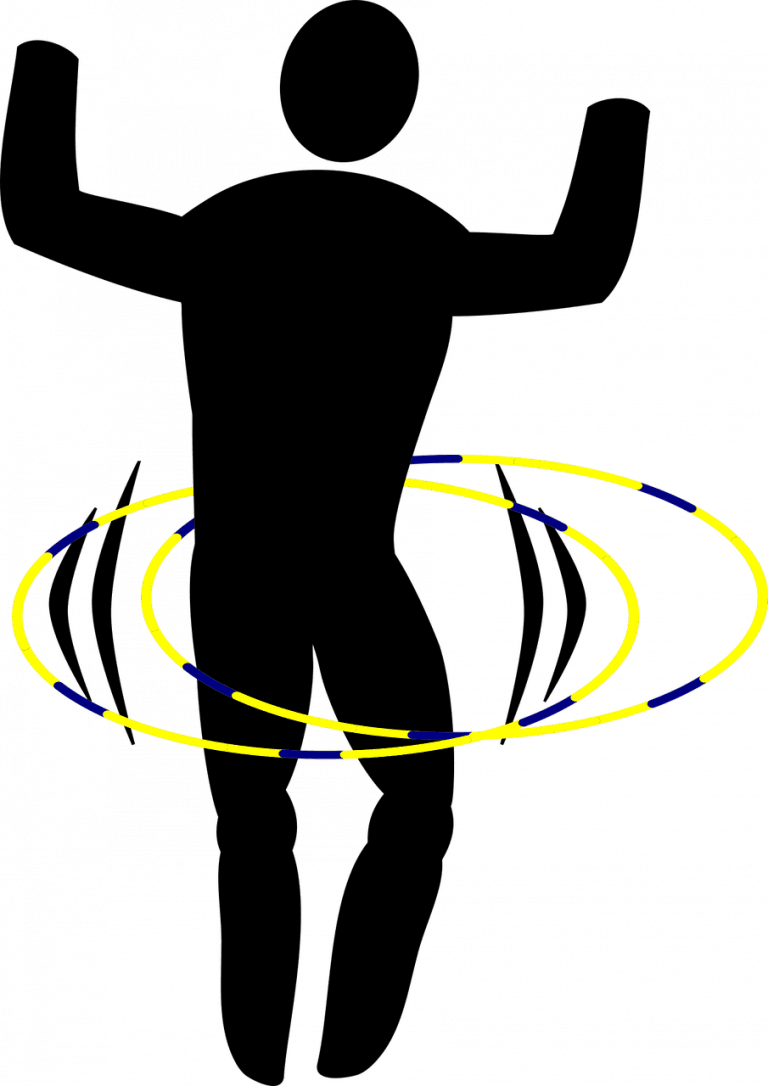The dream of local fat burning for many people sleeps with their eyelids. Unfortunately, almost every trainer after hearing that he has to make the fat come down especially from the stomach will answer that local reduction is not possible. No doubt there is a lot of reasons for that. Interestingly, however, some research indicates the possibility of redistribution of fat, and it is quite a simple way.
What's the way?
Researchers from the University of Waterloo in Canadian Ontario decided to check how regular hula hoop training will affect body parameters. Yes, the same hula hoop that once could be found in the homes of most women wishing to lose a few kilos without going to the gym. The study lasted for 6 weeks, and 18 participants took part, of which unfortunately only 13 lasted until the final measurements. The aim was to check how such training affects composition of body shape and body mass as well as muscular endurance.
The test used a hula hoop with loads weighing 1.7 kg, having a bulge on the inside. According to marketing assurances, such bulges should translate into more stimulation of the body muscles. Ladies participating in the study once a week appeared in group activities, and 4 times a week exercised at home, which gives the sum of 5 workouts a week. The age of the ladies was in the range of 32-58 years, and the average height and initial body weight are respectively 166 cm and 75.7 kg. The measurements were taken before and after the training cycle, up to a maximum of two weeks after the last workout. Waist and hip circumferences, body mass, BMI, waist-to-hip ratio (W-to-H ratio), torso muscle endurance (isometric exercises - Biering-Sorensen test , V-sit and various plank variants ) and skin fold measurements were measured. triceps, biceps, shoulder blade, hip bones and calves. The participants were informed that during the entire study period they would remain at the current lifestyle, in addition to introducing hula hoop training .
5 participants did not survive the final measurements for various reasons - illness, absence from group activities, excessive skipping of home training. Among the 13 most determined ladies who lasted to the end, six missed one training session throughout the cycle, and one left two sessions.
The results of tests determining the strength of the body's muscles came out on average. Only V-sit had a slight improvement, the rest of the changes were not significant. Interestingly, one participant had a remarkably high improvement in the V-sit - the time is almost doubled, from 463 to 910 seconds! Due to the unknown cause of this phenomenon, because in other tests this person had changes as average as the other participants, this result was not included in the statistics.
The average body mass changed slightly, from 75.7 to 75.2. A kilogram in six weeks is definitely not a satisfying result. BMI changed by 0.2, from 27.4 to 27.2. More interesting effects can be seen in the waist and hip circumferences. At the waist, an average of 3.4 cm was lost, and considering the lack of dietary changes and generally not much demanding workouts (the session is a maximum of 15 minutes), this should be satisfying. The decrease in hip circumference was on average 1.4 cm. Along with these changes, the waist-to-hip ratio also improved.
The situation is different when measuring skin folds. Here you can see the increase of the result mainly on the triceps, but also to a lesser extent on the shoulder blade and calf. So the whole picture gives us a slight change in body weight, along with the loss of the waist circumference and increasing the amount of fat on other parts of the body.
Limitations of the study were quite a small number of subjects, especially that some showed low determination. Probably also a little more measurements and monitoring the nutrition of the participants would be useful. Hula hoop exercises were addition as part of the warm-up and cooling down, which could also have a subtle effect on the results. There was also no control group, although in this case it would be difficult to create one. It would be good to see, for example, the comparison of the effects of exercise with a loaded hula hoop , to those from an ordinary, traditional model. Rather, this research should not be considered as hard evidence, but as a curiosity.
In summary, the hula hoop exercises have effects not entirely consistent with expectations, but the possibility of redistributing adipose tissue seems to be very interesting. It can even be said that it is more interesting than useful because the effect was rather subtle, but it opens the door for further research on the subject of fat distribution. It is also worth mentioning that this redistribution seems to be beneficial not only for aesthetic but also health reasons, because the abdominal fat is first and foremost blamed for the negative impact on health.
If we want to achieve serious effects, I suggest to focus on a good resistance training with an individually selected diet, and the hula hoop exercises can be treated as an addition, which should additionally improve the body proportions.






